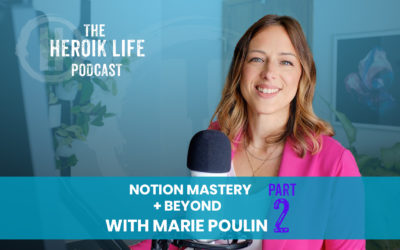TL:DR – Digital metrics of Social Capital like (followers, likes, connections) fail to fulfill their primary function – to accurately measure and account for the influence and reach of relationships between brands, platforms, and audience. The systems and platforms that use the current iteration of metrics (followers, likes, connections), are so easy to game and manipulate to render them useless as an indicator of social capital.
These simple metric, even under ideal conditions fail to account for the strength, depth and quality of connections in favor of a linear system, where the more connections the better. The result- is the cut-throat, high school popularity contest, where everyone is willing to hack and game the system and focus exclusively on these numbers and to hell with what they were originally intended to measure or indicate. It’s become a beast of its own.
And, because it is so easy game such a simple system, so many people are doing it, that there is an inflated, artificially hyped up market, that puts an honest operator at a severe disadvantage. The audience of prospective vendors, customers, investors, will look at these metrics and compare an honest number to a hyped up number and favor the hyped up number more time than not.
So the current market and societal condition boils down to this kind of hypothetical, if there are no rules for integrity of numbers, and your livelihood or growth of business depends on that score, do you seek to grow an 100% organic following (in a market that doesn’t value it), or play to win?
-END OF SUMMARY-
WHAT FOLLOWS IS FOR PROFESSIONALS, DEEP DIVERS AND INTENDED FOR INTELLIGENT AUDIENCES ONLY.
READ ON AT YOUR OWN RISK!
What is social capital?
Every modern digital platform business has some quantified representation for social capital. Social capital consists of the networks of relationships among people who live and work in a particular society, enabling that society to function effectively. We can agree there’s a fundamental difference between digital social capital (social influence on the screen), and social capital in real life. And, when we talk about social capital and influence, most of us think about our practices on social media.
Followers, likes, and connections are all metrics designed to measure social capital, or put another way REAL connections and REAL relationships. The problem is all of the dominant forms and formulas used by the major social platforms and modern networks, to determine and establish influencers do not reflect the quality or complex nature of social capital, and sacrifice integrity and accuracy for a speedy result, the number of connections. This gives a false impression as to the impact and influence that anyone has, and favors numbers over true influence, and thus encourages fraud against the essence of what it claims to intend to measure.
In plain English, the instant you leave out the details to create a simple scorecard, you’ve created a system designed to be hacked and gamed. Social capital is usually assessed by the number of “connections” between people. This is easier to quantify and used as an indicator or surrogate for relationships. The bigger the number, the more valuable you are.
Since no one is measuring or looking at the quality of your connections and true social capital, they merely form their perceptions based on the number and amount of connections to determine a pecking order or assign a value to you, a person, a brand, business or organization. In a system or society that favors quantity over quality, there’s a clear benefit to increasing the number of connections at all costs regardless of quality.
So based on the ACTUAL rules of the game, quantity over quality, in all costs, there’s no need to operate with inhibiting notions and rules that don’t apply.
As a result, everyone and their mother abandoned the quality of connection in favor of quantity. And they don’t even care if it’s real or fake. No one is digging into the context of your connections, just the surface level quantity.
Rules that don’t matter to the current state of measuring social capital:
-How well you know the people you’re connected to
-The way in which you earned the declaration of connection (or follow, or like)
-The opinion or regard those connections have for you.
None of it matters to the scoreboard. And make no mistake. Everyone is looking at the scoreboard.
But it gets more interesting. You see it’s not just the players who manipulate and influence the numbers, the people who create the game, the platform, and field of play. They too have a vested interest in perpetuating engagement on the platform, and they’re willing to give away the appearance of increased social capital for increased social engagement.
The people creating the scorecard, are platform providers who in turn are selling something too, usually advertisements. But they too from the outset hack their own platform.
They create fake user profiles to validate their own platform.
The fake user profiles have many followers (mythological amounts of followers) or connection, which to the unsuspecting new user, sets an expectation, and performance standard, that baits the real user to strive to achieve the levels of the fake user.
Then to attract yet more users, there’s usually a bribe, an early bird special, a force multiplier of some kind to falsely elevate the score of connections. This creates an elite layer of early bird influencers who inspire others to do the work – kind of like a digital pyramid scheme.
Later, in the journey of the platform, if the numbers dip, or to reinvigorate growth a new force multiplier is introduced, a new reason to engage, and inflate the linear function, the over simplified metrics or key performance indicators of connections that are presumed to represent legitimate relationships.
This has happened with every major social media platform and business network for the past 10 years. People know it, but they still do it. Why? The Great Rack Effect – At the end of the day, as long as the rack looks great, almost no one cares if it’s real or fake, because everyone benefits from believing it’s real and really good.
This is one of the major conundrums of our new social structure. USE IT BUT DON’T FALL FOR IT.
Because your prospective customers, peers, only look at these kinds of scoreboards, and they’re so dang easy to game, hack, and manipulate; the rest of the world got busy hacking those numbers. The scores get over-inflated and no longer represent by any measure what they were intended to indicate (social capital). The hyped number becomes the new normal and those who hold back are misrepresented and portrayed in a negative light, out of alignment with their true value in terms of social capital and influence.
So, in my opinion, these metrics and systems should not be looked at as institutions of integrity but rather rigged games, that are designed to be cheated. Platform creators know this and encourage the popularity contest and the false metrics of social capital. It’s one of the few games where cheating is encouraged in subtle ways and not at all punished.
So there’s absolutely no need for participation with a degree of integrity because hacking the system become the norm, the compromised system becomes the north manipulated system becomes the norm the overinflated and height becomes the norm. So use it but don’t fall for it. Hack the system to represent the numbers that represent The value that you see in your brand.
So why are you playing by different rules to get a measurement that is fundamentally erroneous and flawed?
-Ethics & Morality Mostly – This is the most common reasoning that people play by different rules. You believe, you want connections to be organic, and earned, and your score to be pure. I just explained that that is not possible. Because even an honest like, or follow, or declaration of connection is a shallow commitment and non-qualitative representation of business.
Over the past decade, despite many attempts, every attempt to quantify social capital in a simple, singular metric, patently fails in terms of accuracy and integrity. Further, every platform built on or with a concept of social capital is fundamentally flawed and open to easy manipulation and gaming. They inherently lack a degree of honesty, authenticity, and integrity in their representations – they are weak attempts that are all too easy to exploit to merit an honest effort.
So if you walk away with nothing else – be convinced of this, there is no value to restraining your efforts to advance the scoreboard of a rigged game and broken system. Your moral obligation is to play by the precise rules and growth hack and optimize to your maximum advantage.
Gaming The System – Why The Numbers Lie
This encourages systems to be gamed in incredibly simple ways, the more networks and groups, the linear function, the more connections the better.
Any linear function that represents or seeks to quantify something that is it fundamentally qualitative is going to be fundamentally flawed. By linear, I mean any system based on a direct and simple relationship. We’d love to believe that life and social capital are truly as simple as a connection indicating influence, but it’s an incredibly weak and unreliable signal at best. And the simple metric won the battle for social capital metric a long time ago. Contenders like Klout, that tried to create a more holistic score, seemed to only introduce a higher level of rigged system, a game no one wanted to play, and slowly continues to dwindle.
Testimonials Beat Them Every Time
In order to create a competition to keep people engaged on any platform, it’s a dirty experience design trick, that people like me use to create and stimulate the popularity contest and keep it going. The concept of rank, and creating an environment to covet or desire one position over another. If more people seem to like your bread than someone else’s then others will want to shortcut/ their own research and purchase the more popular brand. This is the nature of business and society today. The problem is, the fundamental flaw is again, the quality of your product, or customer service, or brand or so on, isn’t represented in the super simple number.
A better system, but still simple and flawed, is the 5-star review system. At least, on these systems you’re getting the opportunity for a degree of qualitative review. But alas, In this case, the fault is indeed with our stars as well.
Even the 5 star systems are based on appeasing a populous on dimensions that may or may not be noble or good. But these systems are fast and lovely, aren’t they? And at least, they’re better than just the number of connections. This is why these types of reviews are often coupled with qualitative reviews, but there’s no summary beyond the number that captures the essence of the sentiment of those reviews…yet.
When we try to quantify or represent social capital in a simple linear form (like the more followers you have, the more influential you are), it will continue to inherently fail and yet be popular. It is a weak signal but such good engagement bait for the platform builders. So use it but don’t fall for it. Hack the system to represent the numbers that represent The value that you see in your brand.
Reconsider the tactics and strategies you may have dismissed when you thought the system was accurate, fair or had any degree of integrity.
– Should you buy endorsements? Should you entice and encourage them?
– Should you host contests to increase your following counts?
– Should you use apps and tools to elevate your social capital metrics until they’re in alignment with the value you see in your brand in your organization?
-Should you embrace the dark arts for what is truly a disingenuous system to begin with?
It’s up to you, but I’m not interested in playing by anything other than the rules, and fairness and accuracy aren’t in the rulebook. Trouble comes using every trick in the book – and so will I. My limit is to represent the value that I perceive in myself, my brand, my company, and products. If you feel your products and brand are crap, then there’s little work to be done. If you believe in what you do, you need to work, to influence them, to guide, and earn the opportunity to educate and inform them so that they can see that same level of value as well.





0 Comments